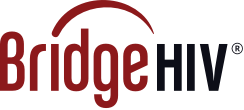
How to “nAb” HIV
With all the buzz on the HIV prevention pill pre-exposure prophylaxis (PrEP), one may wonder what ever happened to the efforts to find a preventive vaccine.
In short, we aren’t giving up and we are actually getting closer to this than ever. We need an HIV vaccine to end AIDS. Our hope is that a preventive vaccine could work synergistically with proven prevention strategies, like PrEP, to truly get new HIV infection “down to zero.”
Every May 18th we celebrate HIV Vaccine Awareness Day to thank our clinical trial volunteers, community members, Community Advisory Board, and the myriad of other individuals who support the important work we continue to do in our search for an HIV vaccine.
Today is no exception.
In the last few years the HIV vaccine field has seen disappointing news with regards to HIV vaccine clinical trials. Failure is a word often thrown around to describe those trials. However, every vaccine trial that doesn’t work in achieving the studies objectives also gives researchers vital information that leads the field closer to finding a vaccine. Henry Ford said, “Failure is an opportunity to begin again more intelligently” and this is exactly the path we find ourselves on today.
We know this: HIV is fickle. It likes to change and mutate itself making it difficult to beat. Recently, however, researchers have found that after years of infection some HIV-positive people produce special antibodies that can stop infection by a broad spectrum of HIV variants. These special antibodies, broadly neutralizing antibodies (bnAbs), just might be a shining beacon that leads us to an HIV vaccine. Today, on HIV Vaccine Awareness Day, we’re celebrating volunteers, community members and researchers alike who have worked tirelessly to find pieces of inspiration from failure.
So what are these broadly neutralizing antibodies and why are they important? Let’s start with a little bit of science. Antibodies are proteins tailor-made by the immune system’s B cells to neutralize or stop specific antibodies. They are shaped like the letter “Y.” Figuring out how to elicit these protective antibodies using a vaccine is a major challenge. HIV changes its genetic makeup so fast that by the time HIV-specific antibodies are produced by the B cells, HIV has changed its structure and cannot be recognized by “outdated” antibodies. Particularly, mutations in the thick sugary outer covering of HIV makes it difficult for antibodies to bind to it. Some of the most stable parts of HIV are hidden deep within 3D structure of the virus and cannot be reached by antibodies.
It is thought that if a preventive vaccine could elicit the immune system to produce these broadly neutralizing antibodies in a high concentration before a person is exposed to HIV, they could protect uninfected people against HIV infection.
Developing a vaccine that can elicit these broadly neutralizing antibodies is not straightforward but scientists are getting closer to this goal. Several broadly neutralizing antibodies have already been identified (Check out bNAber if you’re interested in the nitty gritty science )! The ongoing challenge now lies in coaxing the B cells of the immune system to produce these antibodies in high concentrations and maintaining them at the sites of HIV transmission.
A protective vaccine will probably need to do more than just stimulate broadly neutralizing antibodies, though. There is evidence that suggests the protective effect of the RV144 vaccine regimen from the Thai Trial, which decreased risk of infection by 31% in a study of 16,000 Thai volunteers, was probably eliciting non-neutralizing antibodies. RV144 was the first vaccine trial to show that a vaccine could protect people from HIV. The overall protective antibody effect in the Thai Trial is thought to be leveraged by synergistic effects from innate immune cells. These data highlight that there are strong relationships among the different arms of the immune system and an ideal vaccine may need to orchestrate beneficial effects of multiple arms of the body’s natural defense system.
Many scientists were surprised that the RV144 vaccine regimen worked, because the vaccines had failed when tested independently. However, two failures combined together have led to inspiration and optimism. So, we’ll stick with Henry Ford on this one. Perseverance is paying off and we are witnessing huge breakthroughs in HIV vaccine science. The polio vaccine, which took 47 years to develop, can be said to have failed its way to success. An HIV vaccine just might be close behind.
Seventeen years ago today, then-President Bill Clinton noted in his commencement address at Morgan State University that, “it is no longer a question whether we can develop an AIDS vaccine, it is simply a question of when.”
Today is no exception.
At Bridge HIV we are eternally grateful to our study volunteers. We know, without a doubt, that we could not have gotten here without them and we celebrate their critical part in the process of making new discoveries and getting closer to “nAb”bing HIV once and for all.
By Dr. Darpun Sachdev, HIV Vaccine Fellow, Bridge HIV
May 2014



